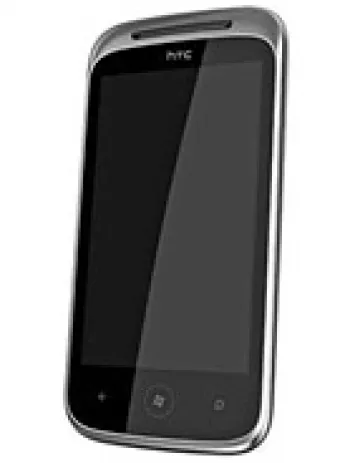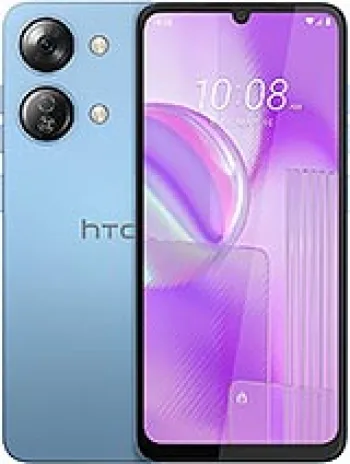
Network Capabilities
The HTC Ignite was supposed to support GSM and HSPA technologies. This means it could handle multiple frequencies, giving it versatility in terms of network compatibility. It was designed to support 2G bands such as GSM 850, 900, 1800, and 1900. For 3G support, it included bands HSDPA 900 and 2100, which allowed for high-speed packet access, promising faster connectivity and data transfer rates.
Launch and Status
The HTC Ignite was announced but never officially launched, with its status marked as canceled. Although the exact reasons for this cancellation are not well documented, it's common for manufacturers to halt projects due to market dynamics, shifts in strategic direction, or insufficient advancements in technology.
Body Design
There are no specific dimensions and weight details available for the HTC Ignite, which is typical for a project that was canceled before reaching the final stages. It was intended to use a Mini-SIM, hinting at its targeted market segment during its planning phase. The lack of size and weight dimensions leaves a gap in understanding its design and usability.
Display
The device was planned to have a 3.7-inch display, which was fairly standard for smartphones during that period. The screen was S-LCD, known for providing sharp colors and good brightness levels. With a resolution of 480 x 800 pixels and a pixel density of approximately 252 ppi, it promised an acceptable display quality for its size, enhancing user interaction with touch and gestures.
Platform and Performance
HTC Ignite was to run on Microsoft Windows Phone 7, which was Microsoft's attempt to break into the smartphone market during that period. The operating system was known for its tile-based interface and integrated services like Xbox Live and Microsoft Office Mobile. The phone was equipped with an 800 MHz processor which, at the time, was adequate for handling the operating system and daily tasks efficiently.
Memory and Storage
With 512MB of RAM, the HTC Ignite was positioned to compete within the entry to mid-level market segment. However, its lack of a card slot for expandable storage might have been a limitation for users looking to store many media files and applications. The internal storage constraints would require efficient management from users and reliance on online storage solutions like SkyDrive (now OneDrive).
Camera Features
The main camera was a single 5 MP autofocus unit, a decent offering at the time for capturing everyday moments. It supported video recording at 720p, which was considered high-definition during the phone's development period, providing users the ability to shoot reasonably clear videos.
Audio and Connectivity
The HTC Ignite included a loudspeaker and a 3.5mm audio jack, appealing to users who prioritized traditional wired headphones and earphones. Connectivity features were comprehensive, with Wi-Fi 802.11 b/g/n for wireless internet, Bluetooth 2.1 with A2DP for wireless audio streaming, and GPS with A-GPS for navigation using Bing Maps.
Additional Features
The smartphone included an accelerometer for motion-based controls and a proximity sensor for efficient screen management during calls. It featured an HTML browser, providing access to mobile web in a time before many contemporary applications dominated the internet space.
Battery Specifications
Powered by a removable Li-Ion battery, users were provided the convenience of switching batteries if needed, prolonging the device's usability especially during extended outdoor activities without access to power outlets. Details on battery capacity remain unspecified, which is often the case with unreleased devices.
Color Availability
Information available indicated that the device was planned to be available in black. This minimalist color choice aligns with the professional aesthetic HTC was known to target, ensuring the phone appealed to business users as well as regular consumers.
Final Thoughts on HTC Ignite
Despite being canceled, the HTC Ignite represents a glimpse into the smartphone evolution during its era. It intertwined aspects of technology, design, and usability that appealed to early smartphone adopters and business users. While we never saw it come to market, its planned features offer a parallel look at smartphone capabilities during its development time, contributing to the landscape which eventually led to the advanced devices we see today.
Key Features of HTC Ignite
- Network Technology: Supports GSM / HSPA
- Display: 3.7 inches S-LCD with a resolution of 480 x 800 pixels
- Operating System: Microsoft Windows Phone 7
- Processor: 800 MHz
- Main Camera: 5 MP with Auto Focus and 720p video recording
- Connectivity: Wi-Fi 802.11 b/g/n and Bluetooth 2.1, A2DP
- Positioning: GPS and A-GPS with Bing Maps
- Sound: Includes a 3.5mm headphone jack and stereo FM radio with RDS
- Sensors: Equipped with accelerometer and proximity sensors
- Battery: Removable Li-Ion battery
HTC Ignite Main Drawbacks
- Device was cancelled and never officially launched, limiting availability and support.
- The CPU speed is relatively low at 800 MHz, which may affect performance.
- Lacks a memory card slot for expandable storage, limiting storage capacity.
- Has only 512MB of RAM, which might lead to reduced multitasking capabilities.
- Did not include a selfie camera, which is a common feature in modern smartphones.
- Operates on Microsoft Windows Phone 7, an outdated operating system with limited app support.
- No official weight and dimensions listed, leaving potential users uncertain about its portability.
- Uses Bluetooth version 2.1, which is outdated compared to newer versions.
View Also
More Phones
All Rights Reserved +14266 Phones © Mobilawy 2025

























